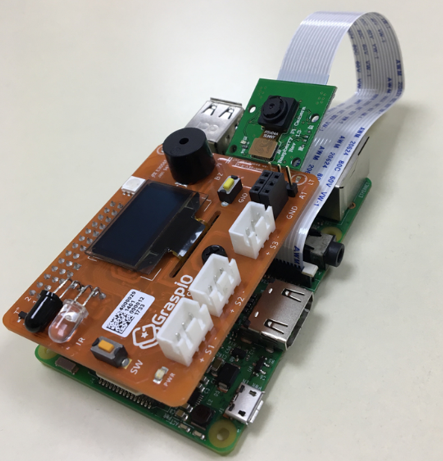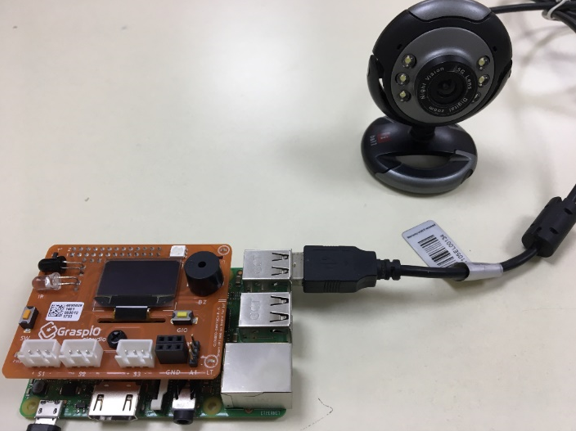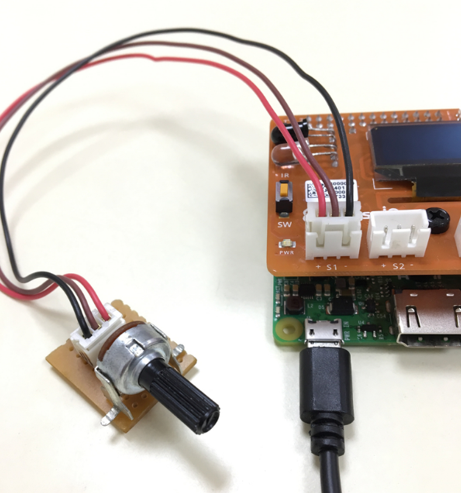Technical datasheet
Download:
Cloudio Technical Datasheet
Features
To view a demo of Cloudio's hardware features,
- Long-press the GIO switch to view a list on the OLED.
- Press GIO to scroll through the list till you see 'Cloudio Demo'.
- Long-press GIO to select it.

Hardware requirements
- Cloudio
- Raspberry Pi 1/2/3/0/0W
- External Wi-Fi dongle (in case of Raspberry Pi 0/1/2)
- SD card (8 GB or higher) with GraspIO OS (To be inserted into Raspberry Pi)
- Power supply (As recommended by Raspberry Pi; more details here)
(For best use of all the peripherals on Cloudio, we recommend a 5V, 2A power supply)
Additional optional hardware
Raspberry Pi camera or USB camera
(For projects that use camera applications using the Camera block)

Camera connected to Raspberry Pi
To connect the Raspberry Pi camera, please follow the steps explained here

Cloudio mounted on Raspberry Pi

Connecting a USB camera
If you're using a Raspberry Pi 0 or 0W, you'd need to use an OTG cable to connect the USB camera to the Raspberry Pi.
Speaker
(For projects that use speaker applications using the Speak block)
The speaker is to be connected to Raspberry Pi's audio jack.

Speaker connected to Raspberry Pi's audio jack
Servo motor
(For projects that use servo motor applications using the Servo block)

Connecting an external servo motor
External sensors
(Depending on specific project requirements, ex- external dust sensor, generic sensors)

Connecting an external sensor
Relay
(For projects that use relays for AC applications)

Connecting a relay
The relay can be connected to any of the ports X1/X2/X3.